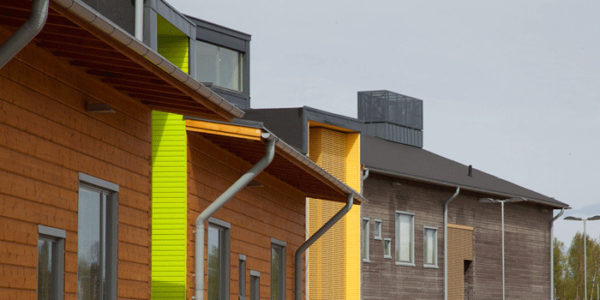
The world’s largest log house campus in Pudasjärvi, northern Finland, is the first wood construction project in Finland that has been comprehensively created according to a new information model. Options created by modelling have been in an extensive use especially in wood construction design and information transfer to the production of wooden components.
The modelling has already shown its worth. For example, it makes it possible to repeat the design solutions in varying circumstances, with highly successful results.
Logs are not often used as trunk material in large projects such as the Pudasjärvi campus. Log-based components tend to be manufactured at a factory. This is a precondition for high precision processes, such as the design and implementation of, for example, joint structures and installations. Feasibility of designed wooden structures has played an important role in design. This has not, however, reduced functionality or the level of architecture.
Thanks to modelling, production designers have got precise information. Due to this, the production chain has been smooth and without hitches under very strict time-frames.
Pudasjärvi campus was the overwhelming favourite of the public in the Tekla BIM Awards 2016 competition. Utilization of modelled log structures in production was considered especially interesting and inspiring. The campus also gained an honorary award from the jury of the competition.
The information model has been produced by Sweco, and the company also participated in the structure and electric design in the Pudasjärvi project.
A life cycle model has been utilized in the Pudasjärvi project as well. It means that the constructor takes responsibility of maintaining of the campus houses during their use. This has been an additional incentive for the constructor to design long-standing and sustainable solutions.